AMOZON LILY
How to grow and care for the Amazon Lily.
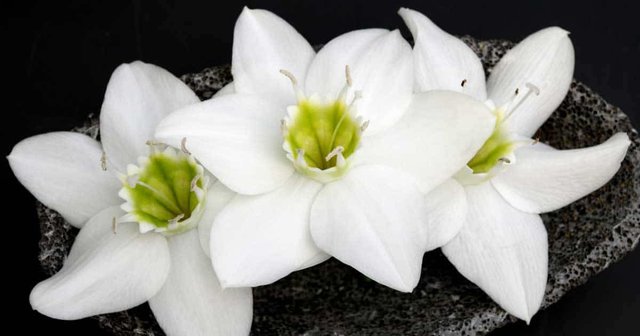
The Amazon lily are bulbous plants originating from the rainforest of the South American Andes of Peru and Colombia. This “hothouse bulbous plant,” has large, dark green leaves, with ribbings similar to those of the familiar plantain-lily found in gardens.
The flower stalk resembles a slim version of an amaryllis stalk.
When this attains a height of 19 inches, the outside bracts fell back and reveals up to five buds, with curving stems, that grow in size daily.
Opened the flower has a span of approx.four inches, showing off the Eucharist lily plants beauty.
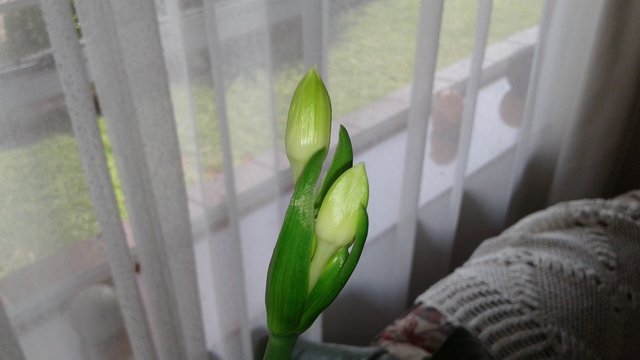
Requirements For Growing Amazon Lily
Since the Amazon lily thrives under humid conditions, it is best to grow it as a potted plant in a location where several other plants are growing together.
This makes it easier to maintain the humid environment. When left to grow undisturbed, this flowering plant reproduces and can actually flower several times annually.
You can also plant them outside in a shady place or grow them in a pot where you can move them to protected areas during winter.
This beautiful plant does well in areas whose minimal temperatures range between 65-70 degrees F at night and by day; they can relatively increase by 10-15 degrees. It also does well in soils that are rich in organic matter.
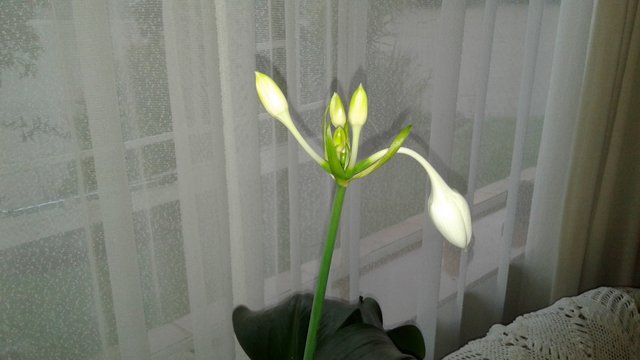
Amazon lily bulbs can be easily bought in the fall. You can start with 4-5 bulbs in a six to eight inch container since they bloom best when crowded.
Just remember to plant them with their necks slightly above the soil surface. Ensure that the soil is loose and well-drained. It’s important to note that they bloom best when pot bound.
Use regular soil with 25%-50% perlite or pumice. Add a to 1 inch layer of gravel or charcoal at the bottom.
It thrives in a well-fertilized soil that’s rich in organic matter. The soil should also be kept evenly moist during the growing season for best results.
After flowering, you can reduce the rate of watering for about 2- 4 weeks to allow the plant to rest although caution should be taken not to dry out the soil completely.
After this, the plant will produce new stems and flowers. It is best to plant the Amazon lily in sunny conditions although not in direct sunlight as its leaves tend to get burned especially during spring or summer.
Remember to plant it in protected areas as the lily does not like to be blown about by the wind.
Amazon lilies produces offsets just like other bulbs, however don’t be quick to replant them in a different container.
Allow them to reproduce till the container is full then divide them only when they seem ready to break the container. This is because their roots don’t like to be disturbed and can fail to bloom for a whole year or more after being repotted.
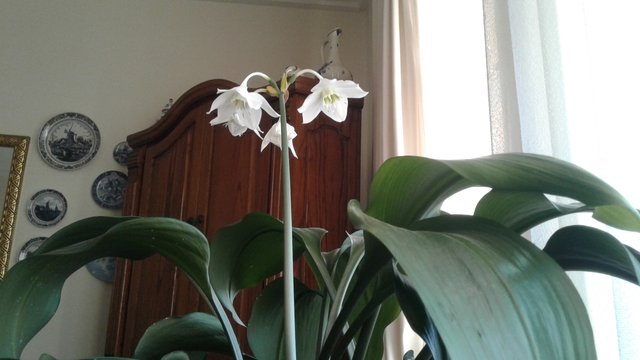
If undisturbed, this plant can actually live in one container for many years.
When need arises, it is recommended to carry out the repotting of the lily during spring.
In order to do so, separate the small bulbs from the parent bulb. Select offsets that have at least one leaf as they will grow very fast as long as they have light and bottom heat but not direct sunlight.
Ensure that where you are repotting them to, the soil is moist, porous and well-drained. Feed and water them on a regular basis as they do not require any rest period before they flower for the first time.
When taking the offsets, extreme caution should be taken not to disturb the roots too much lest they fail to bloom for a year or more. However, this exercise should be done every 3- 4 years.
Make sure not to spray water on the open flowers. The cut flowers of the lily have the amazing ability to live for about 8 days provided clean fresh water is supplied to them on a regular basis.
Moreover, every now and then, remove withered leaves and faded blooms from the pot.
The Amazon Lily and Pests.
Although the Amazon lily is rarely bothered by pests and diseases due to its sturdy nature, it is advisable to be on the lookout for pests such as scale bug insects, caterpillars, bulb mites, thrips and spider mites.
In winter when humidity is low a Spider mite problem can show up, if the plant is placed near a warm, sunny window.
Frequent misting helps to keep humidity high and these mites can be easily wiped off with some damp sponge as they can cause stippling of leaves making them to lose their gloss.
On the other hand caterpillars eating can chew ugly holes in the leaves and snails and slugs will feed on the foliage if given a chance.
Thrips are tiny insects black in color that tend to hide under the leaves. They feed on the leaf leaving behind a silvery stippling. They can also be easily removed by wiping with a damp sponge.
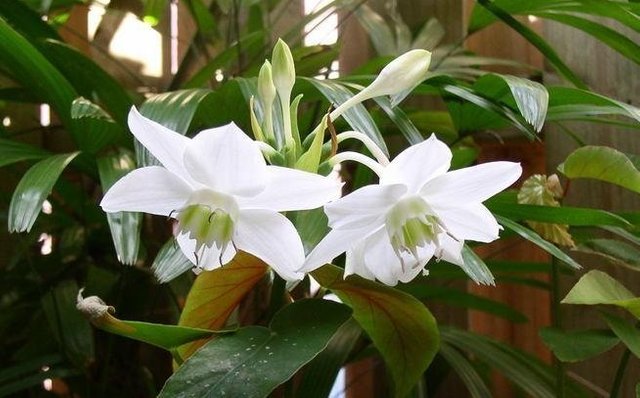
All photographs taken with my smartphone except the first one which I found on the web site.
Information Reference :- https://plantcaretoday.com/amazon-lily-plant-care.html
I upvoted your post.
Cheers to you.
@Pinoy
Posted using https://Steeming.com condenser site.